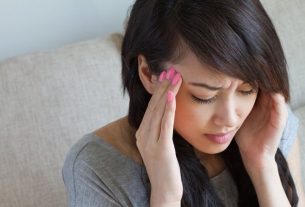Male urinary incontinence is characterized by the involuntary loss of urine, which can happen after surgery to remove the prostate or as a consequence of changes in this gland. Furthermore, incontinence is also more common in elderly people with Parkinson’s or who have had a stroke, for example.
Thus, in male urinary incontinence, a man may notice the presence of drops of urine on his underwear, a sudden and uncontrollable urge to urinate and loss of urine during exertion, such as when coughing or sneezing, for example.
Loss of total urinary control can be treated with medication, physiotherapy or exercises to strengthen the pelvic floor muscles, and in some cases, surgery may be indicated. In any case, involuntary loss of urine should always be evaluated by a urologist, who will be able to identify the cause and initiate the most appropriate treatment.

Main symptoms
The main symptoms of male urinary incontinence are:
- Drops of urine that remain on underwear after urinating;
- Frequent and irregular loss of urine;
- Loss of urine during moments of exertion, such as laughing, coughing or sneezing;
- Sudden and uncontrollable urge to urinate.
Incontinence can appear at any age, but it is more common after the age of 45, and especially after the age of 70, and it is important that a urologist is consulted.
How the diagnosis is made
The diagnosis of urinary incontinence must be made by the urologist based on the evaluation of the signs and symptoms presented by the man. Furthermore, a urodynamic examination may be recommended to assess the contraction of muscles related to urination and thus confirm the diagnosis.
Make an appointment with your nearest urologist to investigate urinary incontinence:
Taking care of your health has never been easier!
Causes of male urinary incontinence
The main causes of male urinary incontinence are:
- After surgery to remove the prostate, as the muscles involved in controlling urine can become injured and inflamed;
- Changes in the prostate, mainly benign prostatic hyperplasia;
- Advanced age, which causes decreased muscle control;
- Brain changes or mental illness, mainly affecting elderly people with Parkinson’s or those who have had a stroke;
- Problems affecting the bladder nerves;
- Use antihistamines and decongestants frequently, as they can, in the long term, reduce the tone of the pelvic muscles, facilitating urine loss.
Some of the causes of male urinary incontinence are temporary and improve over time. Therefore, it is important that a urologist is consulted to identify the cause of incontinence and initiate treatment, if necessary.
How the treatment is carried out
Treatment for male urinary incontinence must be guided by a urologist according to the cause, and may be recommended:
1. Medicines
Urinary incontinence medications help reduce bladder contractions or improve the functioning of the urethral sphincter, preventing urine loss. Thus, the doctor may recommend the use of anticholinergic, sympathomimetic or antidepressant medications, but collagen and microspheres may also be placed in the urethra in case of injury to the sphincter after prostate surgery. Check out the main remedies for urinary incontinence.
2. Physiotherapy and exercises
In physiotherapy, electronic devices such as “biofeedback”; functional electrical stimulation of the pelvic floor muscles with an endoanal electrode, TENS or a combination of these methods.
However, the most recommended exercises are the Kegel, which strengthen the pelvic muscles and must be performed with an empty bladder. To do this type of exercise, you must contract your pelvic muscles and maintain the contraction for 10 seconds, then relax for 15 seconds, and repeat 10 times, three times a day.
3. Surgery
The urologist may also recommend, as a last resort, surgery to place an artificial urinary sphincter or perform a slingwhich consists of creating an obstruction in the urethra to prevent urine loss.
Bibliography
- UNIVERSITY OF MICHIGAN HEALTH. Urinary Incontinence in Men. Available at: <https://www.uofmhealth.org/health-library/zp1188#zp1193>. Accessed on Feb 9, 2022
- NHS. Urinary incontinence. Available at: <https://www.nhs.uk/conditions/urinary-incontinence/>. Accessed on Feb 9, 2022

Sign up for our newsletter and stay up to date with exclusive news
that can transform your routine!
Warning: Undefined array key "title" in /home/storelat/public_html/wp-content/plugins/link-whisper-premium/templates/frontend/related-posts.php on line 12
Warning: Undefined array key "title_tag" in /home/storelat/public_html/wp-content/plugins/link-whisper-premium/templates/frontend/related-posts.php on line 13




